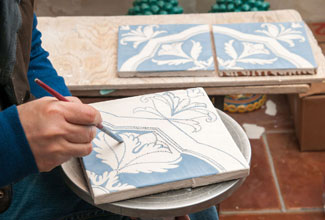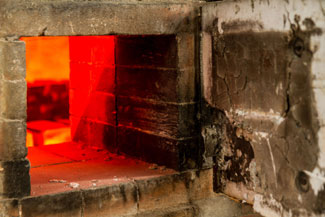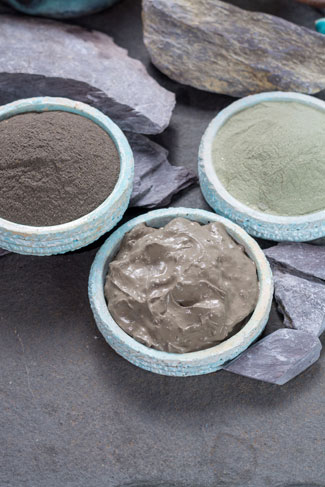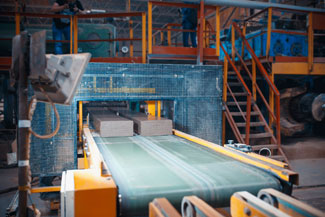How Tile is Made
CERAMIC TILE IS A WORK OF ART YOU WALK ON.
How ceramic tile is created is in a world all its own. The process is ancient, and the resulting benefits are many and desirable. Ceramic tile is art underfoot that you will admire as a homeowner. Understanding how ceramic is made helps you to better understand and evaluate its performance aspects. This is important because these are the materials you will be living with for years to come.
CERAMIC PRODUCTION UNITES EARTH AND FIRE.
The main ingredient of ceramic tile and its general manufacturing process has not changed much throughout the centuries. All ceramic tiles are created from natural products extracted from the earth that are shaped into tiles and then fired in kilns at extremely high temperatures.
A GUIDE TO THE TWO CLASSES OF CERAMIC TILE.
There are two main types of tile constructions: glazed and unglazed. When you look at glazed tile from the side you can see two layers. The top layer is called the glaze. Glazed tile has a hard, non-porous, impermeable surface after firing. They are more stain resistant than unglazed tile and are easy to clean. Unglazed tiles are solid colored all the way through and do not have a top layer of glaze. This is often referred to as through-body construction. They have no additional surface applications and are typically denser and more durable than glazed tile.
THERE ARE FIVE STEPTS IN THE CERAMIC TILE MANUFACTURING PROCESS.
The process begins with the mining of raw materials, which is composed of mostly clay and minerals. The clay and mineral mixture is blended and mixed into a semi-fine powder. Water is added to form a wet slurry or mud-like consistency. Then the slurry is pumped into a large dryer. Next, the clay is pressed into a tile shape.
Tile can also undergo another method called extrusion which can replace the pressing step. Extruded tiles are formed by forcing the clay material through a mold for a desired shape. The tiles are then dried to remove some of the moisture. In the next step, those tiles that will have a glaze have a glazing liquid applied with either a high-pressure spray or is poured directly onto the tile. If the tile is to remain unglazed, this step is skipped. Lastly, the ceramic tiles are fired in a kiln at temperatures around 2,000 degrees Fahrenheit.




